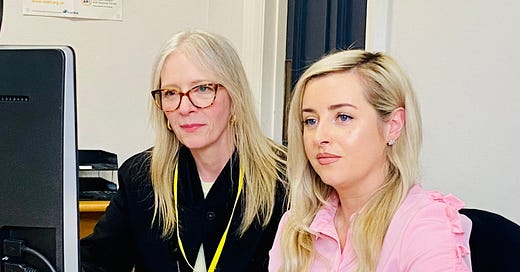Follow-Up or Fizzle Out: Mastering the Art of Political Persistence
Turning initial contact into long-term influence
In policy and public affairs work, persistence is essential — but it must be done with strategy and respect.
Most organisations can write a good briefing and send an introductory email. Far fewer excel at following up in a way that builds trust, secures meetings, and ultimately delivers results.
Effective follow-up is often the difference between a message being read and a message being acted on. This post explores how to follow up professionally, build a clear contact strategy, and maintain momentum with political and policy stakeholders.
Following Up Without Overstepping
There’s a fine line between being persistent and being pushy. The goal is to remain on a policymaker’s radar without becoming an unwanted presence in their inbox.
Best practice includes:
Waiting a reasonable time before following up (typically 7–10 working days)
Keeping messages short, polite, and purpose-driven
Offering a new reason to engage — for example, new data, a relevant event, or stakeholder endorsement
Being proactive shows commitment. Being respectful shows you understand their time pressures.
Build a Contact Strategy — Not Just a Contact List
Many organisations track who they’ve emailed. Fewer track how relationships are progressing over time.
A robust contact strategy includes:
A central place to record who has been contacted, when, and with what message
Clear ownership of follow-up actions within your team
Strategic planning: who to engage first, who to re-engage later, and when to escalate to more senior contacts
This approach helps avoid duplication, ensures consistency in messaging, and builds credibility over time.
Real-World Wins: What Effective Follow-Up Looks Like
Some of the most successful campaigns didn’t succeed on the first email, meeting, or briefing. They succeeded because the organisation stayed visible, credible, and relevant.
Examples might include:
A briefing sent six months before a bill was introduced, followed by quarterly updates, and then a targeted ask at the right moment
A committee chair who initially declined a meeting, but responded positively after a tailored follow-up referencing recent remarks in the chamber
An MLA who became an advocate after regular, well-timed engagement — even though initial responses were minimal
The key to all of these examples was not just persistence, but strategic persistence — tailored, timely, and grounded in value.
Final Reflection
A single email rarely changes policy — but consistent, thoughtful engagement can.
Follow-up is not an administrative task. It is a core part of relationship-building and influence. Done well, it demonstrates professionalism, commitment, and a clear understanding of how political engagement works over time.
How I Can Help You
If navigating the policy world feels overwhelming, I’m here to help. Here’s how I can support you:
Monitoring Policy Opportunities: I’ll keep you informed about legislative timelines, consultations, and key policy moments.
Writing Consultation Responses: Don’t have time? Let me craft impactful responses on your behalf.
Developing Advocacy Strategies: Together, we’ll create a roadmap for achieving your policy goals.
Crafting Messages That Stick: I’ll refine your policy ask into a clear, compelling message that resonates with decision-makers.
Content Creation: Need blogs or social media posts to amplify your message? I’ve got you covered.
📧 Get in touch here to learn more: hello@policy360.co.uk





